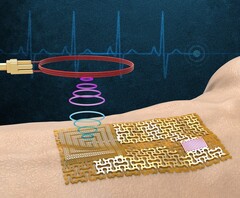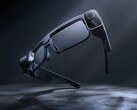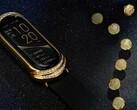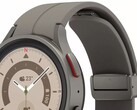Wearables represent one of the fastest growing industries to date, with an estimated global revenue of US$380.5 billion by 2028. Sensors powered by wireless tech are now small enough to be included in wristwatches or armbands and they can measure various human biomarkers like glucose concentration, blood pressure, heart rate, steps taken throughout the day etc. These chips still require a small battery, but, in the near future, there will not be any need for synthetic power sources, as researchers have managed to fabricate wearable sensors embedded in a thin mesh that does not require wireless chips or batteries.
The latest wireless electronic “skin” devised by a group of MIT engineers was recently detailed in the respectable Science journal. This e-skin made of flexible, semiconducting film can easily adhere to the human skin like electronic Scotch tape. Researchers discovered that the piezoelectric properties of gallium nitride can allow this material to act as wireless transmitter, as well as sensor, so they integrated a thin layer made of it into the e-skin.
To boost the measurement accuracy and strength of the electrical signals, the MIT team paired the gallium nitride with a conducting layer of gold. Thus the e-skin proves to be sensitive enough to vibrate in response to a person’s heartbeat, plus it can also detect the amount of salt in human sweat when paired with an ion-sensing membrane. The vibrations generated by the thin layer produce an electrical signal that can be interpreted by a nearby receiver.
Jeehwan Kim, one of the authors of the design study, explains that “chips require a lot of power, but our device could make a system very light without having any chips that are power-hungry.” Furthermore, the e-skin can be worn “like a bandage, and paired with a wireless reader on your cell phone, you could wirelessly monitor your pulse, sweat, and other biological signals.”
Now that researchers have demonstrated how chip-free wireless sensors can be integrated in the e-skin design, the next step would be to diversify the sensor array with selective membranes that can detect various vital biomarkers. Study co-author MIT postdoc Jun Min Suh mentions that “if you change the sensing membrane, you could detect any target biomarker, such as glucose, or cortisol related to stress levels.”









